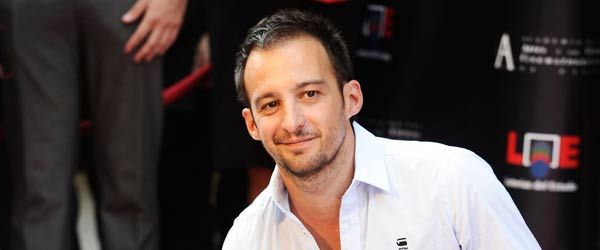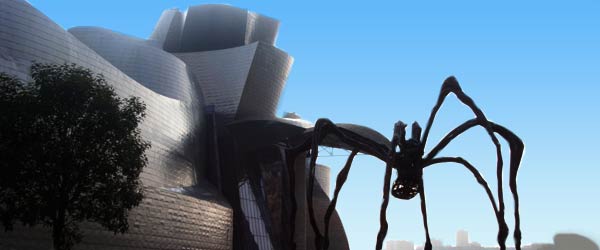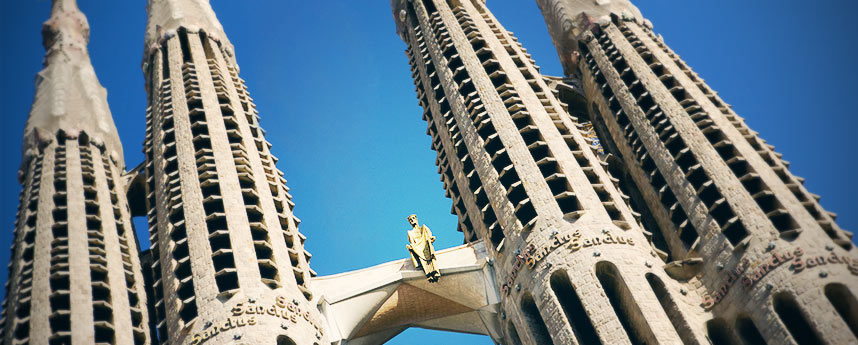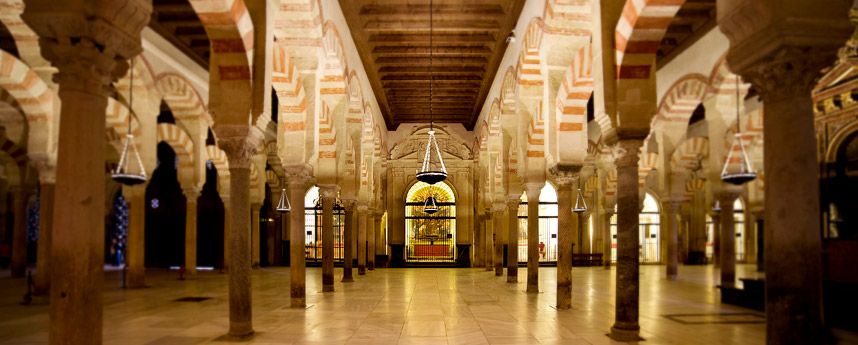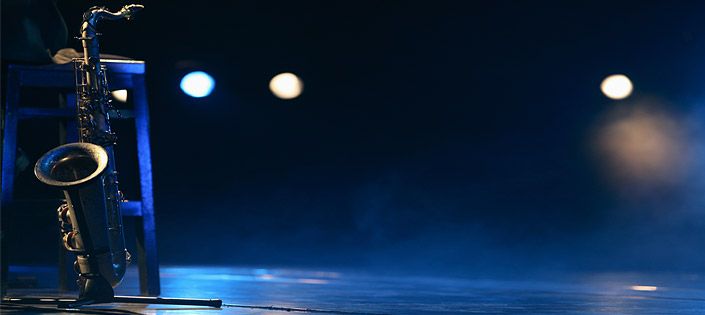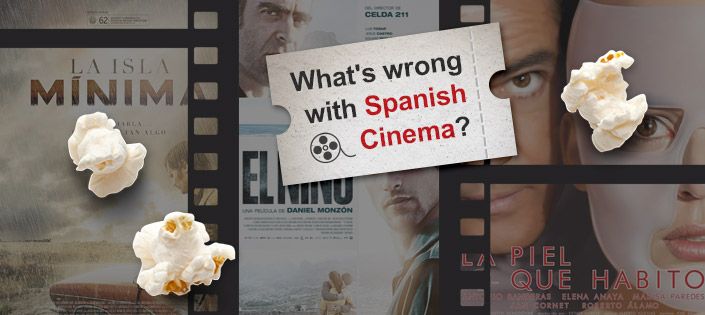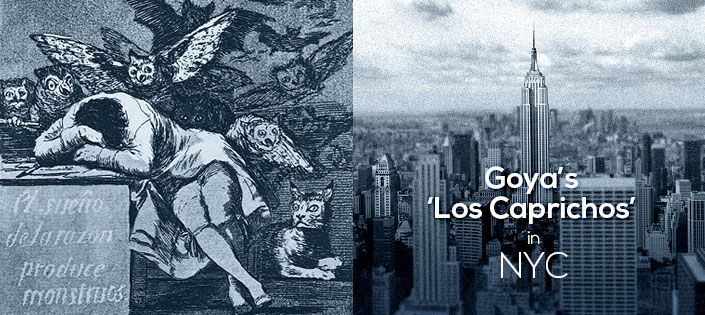Francisco José de Goya y Lucientes or simply "Goya" (1746-1828) is one of Spain's most famous and recognized artists. His mastery of art allowed him to bridge the romantic with the modern; considered the last of the Old Masters, he was able to change his style with the times in a way that few other artists have been able to accomplish. Today, the National Arts Club in New York is showing one of his seminal works, the Los Caprichos (Caprices) series of prints in its entirety. Subversive and critical, Goya was never afraid to air his opinion through his art and deftly aired his feelings through his work—even as court painter—and with Los Caprichos we can see how he pushed the limits (and buttons) of Spanish society in an era of instability and unrest.
Goya was a skilled at expressing criticism through his art subtly employing details and references offering the viewer the possibility to choose between different interpretations. This skill is best demonstrated in his portrait Charles IV of Spain and His Family (1801). Goya uses Velazquez's immortal "Las Meninas" as his model but in this painting there is a claustrophobic feeling as we see Goya smothered, in the background, by the royal family. Goya pulls no punches in dressing the family in extravagant clothing and, most notably, places the queen in the center of the image since it was believed that she was the real power behind the throne.
One aspect of his work that is lesser known (along with his work in tapestries) is what he accomplished in etched works. There are two series of prints which are the most well known: Los Caprichos (1797-1799) and the Disastres de la Guerra (1810-1820). In the Disasters of War, a series of 82 prints, Goya protests against the violence of the Peninsular War; he even illustrates the reverses of the liberal cause in Spain due to the restoration of the Bourbon monarchy. Incredibly, this was accomplished while still exercising his role as court painter producing many memorable portraits during this time.
Los Caprichos
His other series, which is now on display at the National Arts Club in New York City, Los Caprichos or "Caprices" is a damning view of what he considered to be the follies of Spanish society. The idea for this project originated in the 1780s thanks to his relationship with some of Spain's most important Enlightenment influenced intellectuals of the day like Fernández de Moratín y Juan Agustín Ceán Bermúdez. As part of this group Goya was able to share is ideas with other like minded thinkers on subjects that were driving Spanish society like religious fanaticism, the prevalence of superstitions and the continued use of the Inquisition as method of control.
With the coronation of Carlos IV in 1788 and the French Revolution on the other side of the Pyrenees, Spain became a more intolerant place and Goya would not begin his etchings due to tension of the time and the sensitive nature of his material. During this time many of his friends, like Gaspar Melchor de Jovellanos, were exiled and others imprisoned. Because of these happenings, Goya withdrew to the Court not willing to take a chance to stand out too much.
In 1793, is is believed that Goya suffered a stroke while travelling to Seville and his physical condition suffered greatly as a result. Now deaf, he also had problems walking and maintaining his balance. Having come close to death and now suffering the physical effects of his illness, Goya's life and work would forever be changed. He became more in touch with himself and more determined than ever to point out the wrongs of society as a way of creating change.
His experiments with aquatinted etchings produced the 80 illustrations known as Los Caprichos: 80 bitter, dark and critical images that take on Spanish society—this series would also foreshadow the style and tone of his Black Paintings at the end of his career. The illustrations do not follow any particular order but there they do appear to go from theme to theme. The first part of the Los Caprichos is dedicated to erotic satire while the second part criticizes the social conventions of the day. The second half of the Los Caprichos is also the most expressive and haunting.
It is in the second half that we begin to see Goya's extravagant and sometimes grotesque allusions to the inequalities of Spanish society. In one print, #42 Tú que no puedes (You Who Cannot Do It), shows two farmers each carrying donkey on their back. The title of this print comes from a popular saying that goes: Tú que no puedes, lleváme a cuestas (You who cannot do it, carry me on your shoulders) which is used with someone asks for help from someone in the same situation or worse. This print is an allegory of how the peasant population must carry the burden of supporting the Spanish nobility (the two donkeys) and clearly illustrates the inherent unfairness of society. In the latter part of Caprichos, known as Brujerías (witchcraft) or Sueños (dreams), we see the full force of Goya's imagination and vision. From his romantic beginnings, Goya shows us a new and grotesque conception of his art. Using these illustrations he gives form to his repulsion of the evil that he perceives in the world employing monsters, deformed fairies and tormented faces.
Goya began to sell this series in Madrid on February 6, 1799 in a perfume shop since traditional book stores and galleries didn't want to have anything to do with this controversial work. Their worries would soon be shared by Goya himself due to threats of having to go before the Spanish Inquisition. After only 14 days of being on sale, he withdrew his book of prints only selling 27 of the 300 copies printed. Goya, now fearing for his well being, sought a way out of his predicament.
As an artist moving between the worlds of the Enlightenment and the nobility, his artistic freedom had reached its limits with the threat of having to go before the inquisition hanging over his head. As a way of saving his work (and himself) he sought the help of his patron, King Carlos IV to who Goya offered to turn over all of the unsold copies and plates. Amazingly, in exchange for this, Goya was still able to negotiate a lifetime pension for his son, Javier. Since then, there have been limited editions printed with last one done during the Republican period in 1937 for a total of 20 editions since their original publication in 1799.
The Caprichos exhibited today in New York is a copy that was donated to the National Arts Club in 1994 by an heir of artist Robert Henri. This copy is a ninth edition that was printed between 1908 and 1912. The last time the the complete Caprichos series was seen in New York was in a 1994 exhibition held by the MOMA. To see the Caprichos you will need to hurry since this exhibit will only last for the month of January—a wonderful opportunity save yourself a trip to the Prado Museum in Spain to view the complete series. Los Caprichos is open to the public at the National Arts Club in the exhibition "Francisco de Goya y Lucientes: Los Caprichos" until January 31 and, best of all, admission is free.

